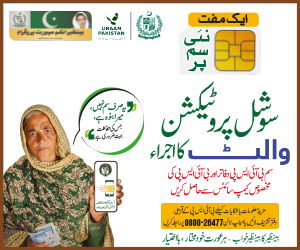
AJK Erupts Amid Strike and Communications Blackout: From Peace Rally to Bloodshed
Deadly Muzaffarabad clashes erupt during strike as protesters, political rally, and security forces collide in escalating unrest.
Samina Mustafa Mughal
M.phil Scholar
Fatal Clashes in AJK Capital as Strike Paralyses Region
At least one civilian was killed and more than a dozen others — including a police officer — were injured on Monday when violent clashes erupted in Muzaffarabad, the capital of Azad Jammu and Kashmir (AJK). The unrest unfolded against the backdrop of a shutter-down and wheel-jam strike, enforced across the region under a communications blackout that has entered its second day.
The Jammu Kashmir Joint Awami Action Committee (JKJAAC), a coalition of traders, lawyers, civil society activists, and political workers, had called the strike after protracted negotiations with the government collapsed. The committee has long demanded the abolition of elite privileges, withdrawal of excessive allowances for officials, a reduction in electricity tariffs, subsidized wheat and food items, and the elimination of assembly seats reserved for Kashmiri refugees based in Pakistan. These demands, according to JKJAAC leaders, reflect the grievances of “ordinary Kashmiris who bear the brunt of inflation, shortages, and political marginalization.”
While the government has repeatedly claimed that a majority of the demands have already been accepted, the JKJAAC insists that official promises have rarely translated into meaningful action, fueling distrust between both sides.
Clashes at Neelum Bridge: From Peace Rally to Bloodshed
The most serious confrontation occurred at Neelum Bridge after midday, when a so-called “peace rally” organized by Muslim Conference leader Raja Saqib Majeed converged on the JKJAAC sit-in. Witnesses described chaotic scenes as Majeed’s convoy encountered protesters blocking the bridge.
According to multiple eyewitnesses, participants of the rally opened fire on demonstrators without provocation. Thirty-year-old Mohammad Sudheer, a crockery shop owner, was struck by a bullet and rushed to the Combined Military Hospital (CMH), where doctors confirmed that he succumbed to his injuries due to excessive blood loss. Another shopkeeper, Mohammad Basharat, 50, was injured by shrapnel and recalled that protesters had attempted to clear a path for Majeed’s convoy, but instead were met with aggression from his supporters.
Witnesses further alleged that police and paramilitary troops accompanying the rally used live ammunition and tear gas against the demonstrators. At CMH, injured civilians displayed spent bullet casings they claimed to have picked up from the site while rescuing the wounded.
“Why was Mr. Majeed permitted to stage a so-called peace march on the same day when the action committee had already declared a lockdown?” asked 20-year-old shopkeeper Raja Safeer, being treated at the hospital’s emergency ward.
While local media carried conflicting reports — some alleging that JKJAAC protesters fired upon the rally — the claims remain unverified. With communication networks suspended, neither Raja Saqib Majeed nor local authorities could be reached for comment.
Read More: Pakistan’s trade deficit grows by $2.32bn in first quarter





Comments are closed, but trackbacks and pingbacks are open.